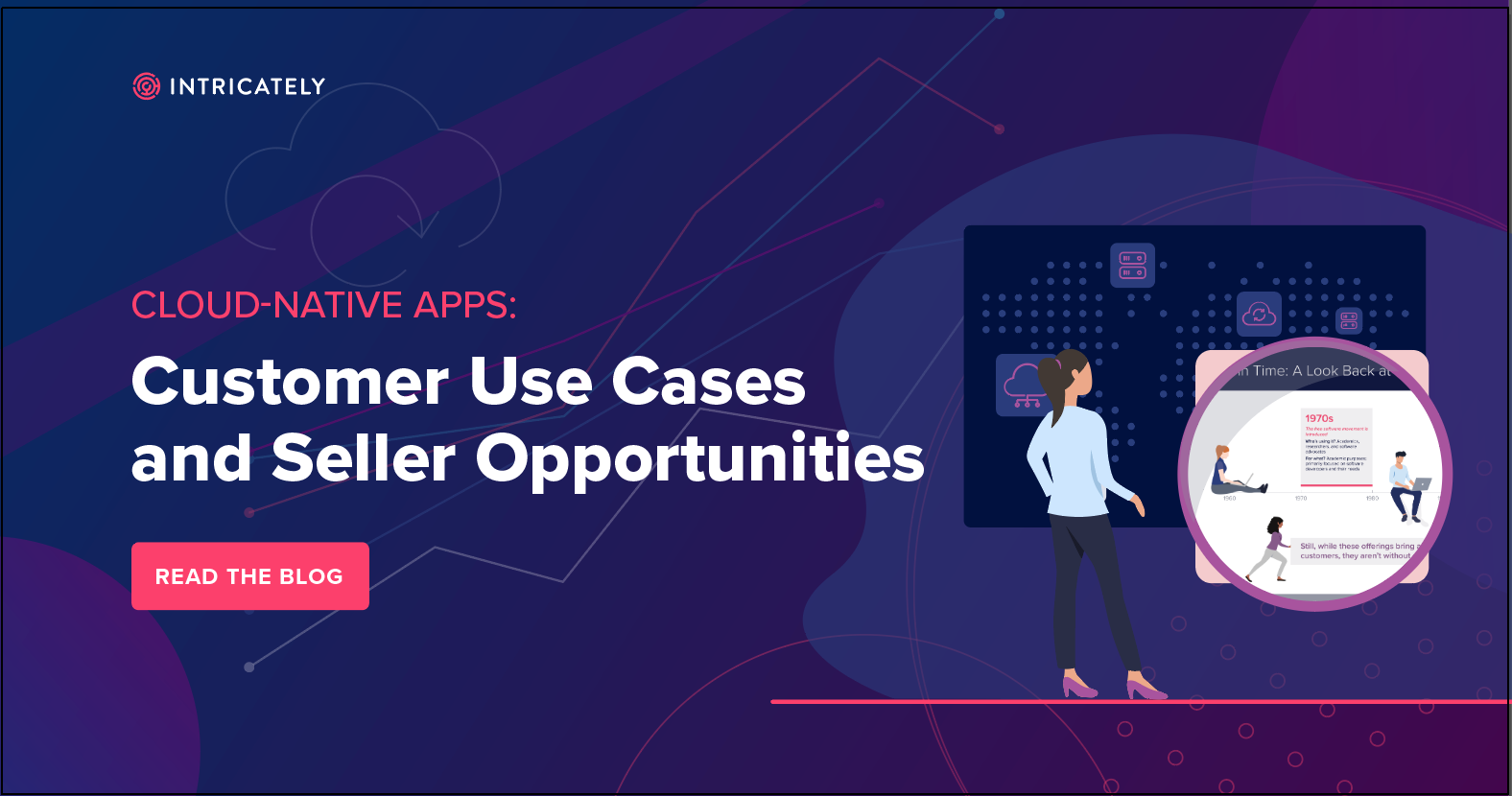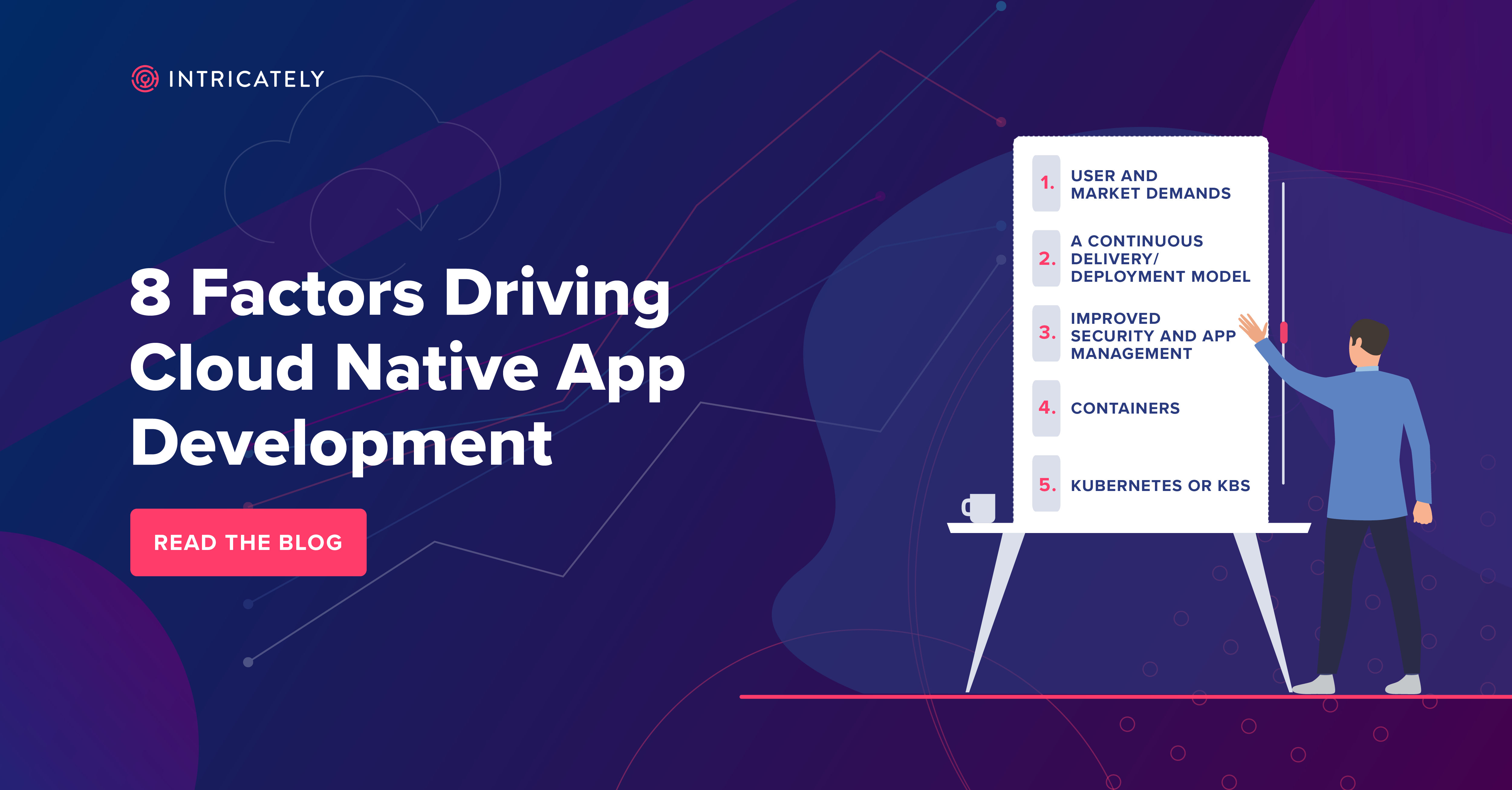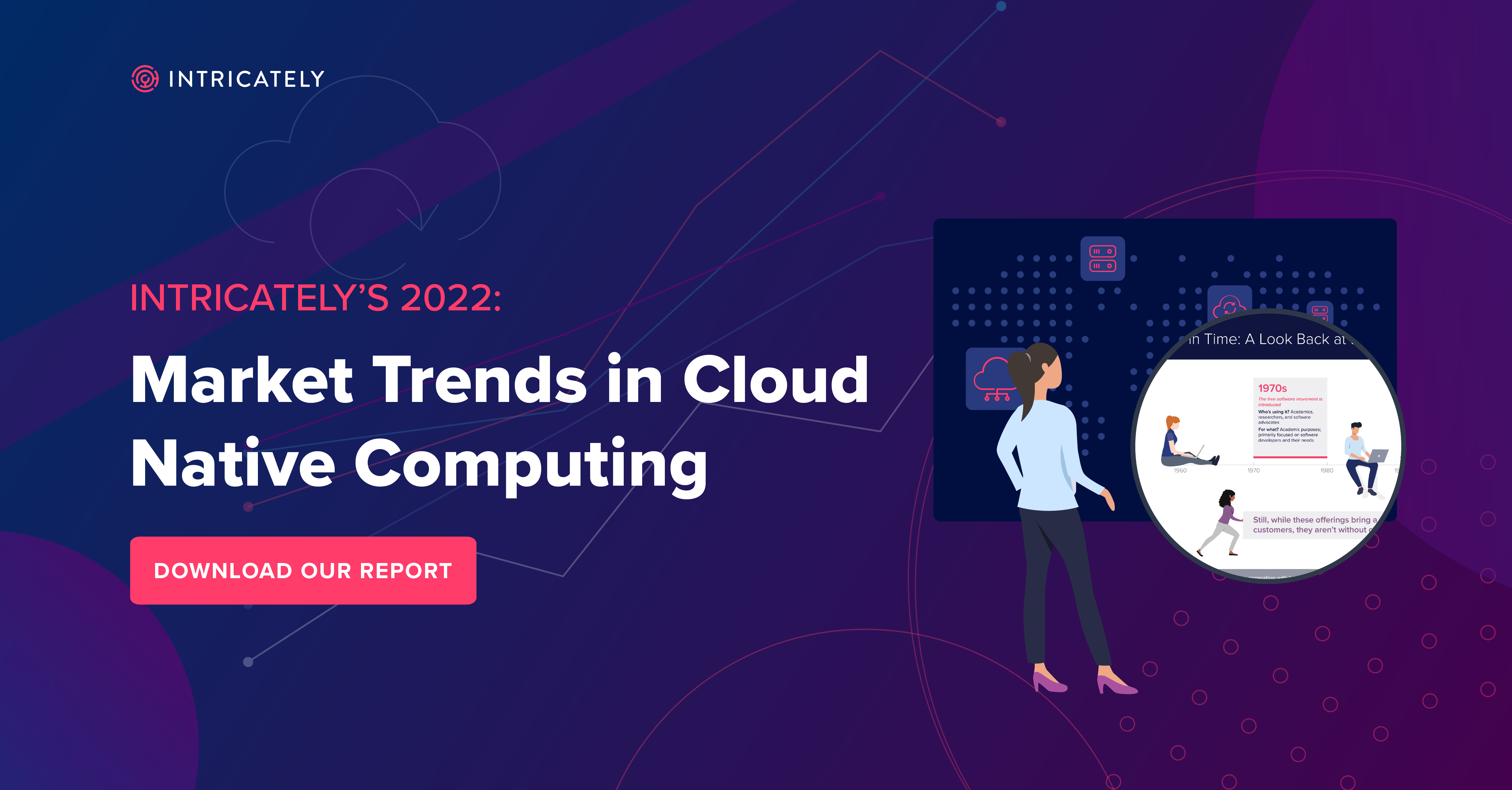
 back to all posts
back to all posts
8 Factors Driving Cloud Native App Development

App development has been transformed by the cloud. In the last few decades, we’ve seen waves of new approaches to software/app development. In the 1980s and ‘90s, for instance, software development required big in-house development teams, complex flow charts/project plans, multiple (and high-priced) external implementation partners (IBM, Accenture, etc.), and took months (sometimes years) to move from concept to design to testing to implementation. In many instances, the business context that initially created the need for the software project had disappeared by the time the software finally launched, rendering the project dead on arrival.
In fact, most software projects done under this “waterfall” approach failed to deliver on their expected benefits, either due to shifts in market demand or because of technical glitches (the software was buggy). Agile development practices soon appeared, offering shorter development cycles and an iterative approach to learning and driving improvement. Agile approaches also brought new terminology as well as new roles and practices, such as daily scrums and sprints.
Needless to say, agile development processes had many champions, but the complexities and new mindsets/lingo required for agile approaches weren’t always workable for many development teams. Other approaches appeared, such as DevOps, which brought about closer coordination and collaboration between development teams and the operations teams that managed and maintained software/apps. Today, we have the cloud . . .
The Cloud Transforms App Development
App development is clearly transitioning to a cloud native environment, where cloud-based resources and platforms facilitate the development, deployment, and maintenance of software/apps. Larger enterprises are already leading the way in developing apps in cloud native architectures (31% of enterprises are already developing cloud native apps, according to Intricately data), but the trend is also growing among organizations of all sizes. Small and mid-sized businesses, for instance, have an annual cloud spend of $64 billion, according to Intricately data – that’s an increase of 156% over the last four years.
Intricately data also shows there are nearly 12 million buyers of cloud infrastructure worldwide, with many of these buyers building cloud native apps that take full advantage of the expanding cloud ecosystem (one made up of open source software, app deployment platforms like Kubernetes, open source managed services/OSMS, containers, and more). The combined annual cloud spend of companies with open source deployments is $300 billion, according to Intricately data. That growth represents a massive opportunity for cloud sellers with offerings around cloud native app development.
8 Factors Driving the Growth of Cloud Native App Development
The reason app developers in organizations of all sizes are increasingly turning to the cloud is simple: cloud native app development is more efficient and better addresses the needs of businesses (and users/customers) for agility, innovation, and optimal use of resources (time, money, talent).
Here are 8 factors currently driving the expansion of cloud native app development:
1. User and market demands.
In today’s market landscape, where dozens of apps are on everyone’s phone, users have limited attention spans and almost no patience for “friction,” a term developers use to describe anything that gets in the way of user’s having their needs met. In 2021, the Google Store alone offered over 3 million apps. An app that’s slow to address a user’s fast-evolving needs is a dead app, largely because another app will come along any minute now. In the booming app space, if you snooze, you lose.
Because user expectations are constantly in flux, app development must be fast and flexible to meet those shifting expectations. Amazon, for example, is renowned for its speed in addressing user preferences. Amazon developers deploy daily, even hour-to-hour iterations of features and functionality, a process they call “continuous delivery and deployment.” When they recognize a need, they address it asap: building a culture and infrastructure that supports customer-centric innovation.
2. A continuous delivery/deployment model.
No app today is “set and forget,” but must instead be adapted almost continuously to address the evolving demands of users. Amazon, for example, changes the color of its “buy” buttons constantly depending on a stream of real-time feedback it collects from users. Having a cloud native approach to apps/software enables businesses to automate much of the iterative process, and make rapid, highly-responsive changes to apps/software based on user feedback.
Of course, setting up a continuous deployment model like Amazon’s requires a great deal of maturity around data management (to set up a user feedback loop) and cloud infrastructure. But the payoff is clear: an agile business can keep pace with user/customer demands as they evolve and create better, more engaging digital experiences via their apps. The more functions that get automated, the more time developers have to focus, laser-like, on continuously delivering the app features/functionality that matter most to users.
3. Improved security and app management.
We’ve seen a big increase in the number and sophistication of cyberattacks since the pandemic began, and as more people have turned to digital platforms for shopping, working, banking, being entertained, and more. These attacks can diminish both the use and credibility of apps/software as well as the businesses that maintain them, making security mission-critical.
The cloud can enable enhanced security features that deter cyberattacks. Among those security features are: (1) data encryption using 256-bit Advanced Encryption Standard (AES) and Secure Sockets Layer (SSL) and (2) Single Sign-On (SSO) so users can securely log in with the same credentials used for enterprise apps, Multi-factor authentication (MFA) adds another level of security.
4. Containers.
Containers are bundles of pre-packaged code that can be repurposed and deployed within any environment. Containers are building blocks that developers can deploy quickly to shorten development time and reduce costs.
A recent Gartner report explains that “by 2023, more than 70% of global organizations will be running more than two containerized applications in production, up from less than 20% in 2019.”
Containers are infrastructure agnostic and rooted in a cloud environment, enabling teams to develop apps that are Cloud native. Popularized by Docker, the app container market is expected to expand by 29% per year for the next four years. Containers are among the most important factors driving the current boom in cloud native app development.
5. Kubernetes or KBs.
Containers need a platform where they can sit upon and be orchestrated as needed. That platform is called Kubernetes, which is an open source platform. As the Kubernetes website explains it,
“Kubernetes provides [developers] with a framework to run distributed systems resiliently. It takes care of scaling and failover for your application, provides deployment patterns, and more.”
According to the Cloud Native Computing Foundation, the number of developers using Kubernetes increased by 67% from Q1 2020 to Q1 2021.
The Kubernetes platform offers apps multiple advantages through automation, including: (1) load balancing of containers that’s responsive to demands on the app, (2) automated orchestration of storage that’s responsive to demands placed on the app, (3) cybersecurity support, enabling for the automatic storage of passwords and other sensitive information. Kubernetes doesn’t do everything, which is why developers often complement it with open source managed services/OSMS.
6. The growth of open source managed services/OSMS.
Open source managed services, or OSMS, have become a central part of the cloud native app development ecosystem, much as gas stations and repair shops once helped propel the popularity of the automobile in the early 20th century. Services and tools are needed to provide app developers and businesses with even more ways to take advantage of the cloud and open-source software. The Kubernetes website, for example, lists over 200 “certified service providers” who integrate with their open source platform.
Open-source managed services are built atop an “open core model,” the core functionality is offered as open source, with a variety of proprietary, fee-based services (i.e., OSMS) placed on top of the core. OSMS providers make the configuration, monitoring, and management of cloud native apps easier, faster, more predictable, and more reliable. OSMS providers mostly focus on businesses that are not cloud infrastructure experts or that don’t have the limitless development talent/resources of companies like Amazon and Google.
7. A scarcity of app development talent.
Good developers and engineers are hard to find, especially in a technology landscape dominated by giant enterprises like Google, Apple, MIcrosoft, Amazon, and Facebook. These “big players” can pay huge salaries and offer massive prestige, which is why lesser-known, lesser-resourced companies struggle to attract scarce resources of tech talent.
SaaS and PaaS providers, as well as OSMS providers, have changed the talent equation for development teams at small and mid-sized companies, rendering the tech talent gap less problematic. Dev teams with cloud provider partnerships can be smaller yet still compete effectively against the bigger players. Expertise and other necessary resources can be easily brought in from the outside, enabling smaller development teams to focus on what matters most to their users/customers.
8. The growth of a "rent rather than own" mindset.
With the maturation of the cloud native app ecosystem, companies don’t need to hire full-time development talent or buy expensive on-premises IT infrastructure that must be maintained and updated. Instead, they can go to a growing market of cloud resources and “rent” exactly what they need, when they need it. We’ve seen the same “rent, don’t own” movement in the larger economy, with “sharing” apps like Uber and AirBnB now commonplace.
Today, even startups can scale up fast using a “rent, don’t own” approach to resources that preserves their limited capital and allows for a more precise, flexible go-to-market approach. Apps can be launched and abandoned quickly, with relatively low costs and in less labor-intensive ways. The cloud has enabled exactly the sort of agility and efficiency around app development.
For a full market analysis, download Intricately's 2022 Market Trends in Cloud Native Computing Report
Intricately's 2022 Market Trends in Cloud-Native Computing Report offers an unparalleled view into the adoption, usage, and spend of cloud-native buyers and market trends around the world.
Download today for insights into how open source companies can grow and monetize their user base by offering managed services. We'll show you how to:
- Target prospects based on chosen hosting environment;
- Assess sales readiness based on number of applications deployed, and;
- Identify high-growth buyers spending over $100k/month on digital infrastructure

3 Trends Shaping the Evolving Cloud Hosting Market

4 Ways Cloud Marketing Leaders Can Get the Most From Their Budgets in 2022

How to Perform Account Segmentation and Prioritization



Challenges and Opportunities for Open Source Managed Services (OSMS) Providers in 2022


Introducing Intricately's 2022 Market Trends in Cloud-Native Computing


